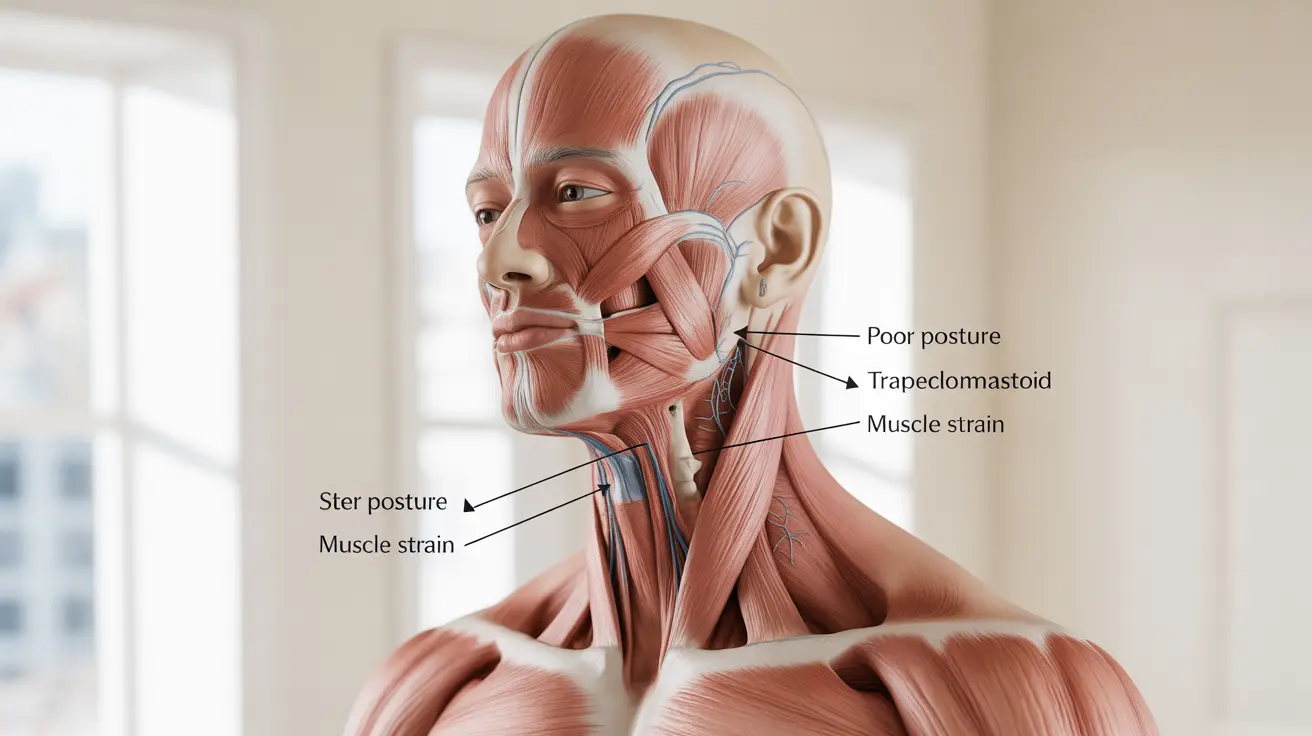Neck pain is an incredibly common condition that affects millions of people worldwide, impacting daily activities, work performance, and overall quality of life. Whether caused by poor posture, injury, or underlying medical conditions, understanding the nature of neck pain and its various treatment options is crucial for effective management.
This comprehensive guide explores the causes, symptoms, and treatment options for neck pain, helping you make informed decisions about your health and when to seek professional medical attention.
Common Causes and Symptoms of Neck Pain
Neck pain can stem from various sources, ranging from simple muscle strain to more complex medical conditions. Understanding these causes is the first step in finding appropriate relief.
Common Causes
- Muscle strain and tension
- Poor posture (especially from desk work)
- Sleep position
- Whiplash injuries
- Cervical spine disorders
- Herniated discs
- Arthritis
- Stress and anxiety
Key Symptoms
- Muscle stiffness and tightness
- Sharp or dull aching pain
- Reduced range of motion
- Headaches
- Radiating pain into shoulders or arms
- Numbness or tingling sensations
Self-Care Strategies and Home Remedies
Many cases of neck pain can be effectively managed at home with proper care and attention to posture and movement patterns.
Exercises and Stretches
- Gentle neck rotations
- Shoulder rolls
- Chin tucks
- Side-to-side tilts
- Isometric strengthening exercises
Posture Improvements
Maintaining good posture is crucial for preventing and managing neck pain. Keep your computer screen at eye level, use a supportive chair, and take regular breaks from prolonged sitting.
Professional Treatment Options
When self-care measures aren't providing adequate relief, various professional treatments are available to address neck pain.
Medical Interventions
- Physical therapy
- Chiropractic care
- Massage therapy
- Acupuncture
- Pain medication
- Muscle relaxants
- Steroid injections
- Surgery (in severe cases)
Prevention Strategies
Taking proactive steps to prevent neck pain is often more effective than treating it after it occurs. Regular exercise, proper ergonomics, and stress management can all play crucial roles in prevention.
Long-term Prevention Tips
- Maintain proper posture during all activities
- Use ergonomic office equipment
- Practice regular neck-strengthening exercises
- Get adequate sleep with proper pillow support
- Manage stress levels
- Stay physically active
When to Seek Medical Attention
While many cases of neck pain resolve with home care, certain symptoms warrant immediate medical attention:
- Severe pain following an injury
- Pain accompanied by numbness or weakness
- Persistent pain lasting more than a week
- Pain associated with fever or headache
- Difficulty with balance or coordination
- Pain that radiates down arms or legs
Frequently Asked Questions
What are the most common causes and symptoms of neck pain? The most common causes include poor posture, muscle strain, and injury. Symptoms typically include stiffness, reduced range of motion, and pain that may radiate to the shoulders or arms.
How can I relieve neck pain at home with exercises and posture changes? Regular stretching, proper ergonomics, and maintaining good posture can help relieve neck pain. Simple exercises like neck rotations and shoulder rolls, combined with proper workplace ergonomics, can provide significant relief.
When should I see a doctor for neck pain, and what tests might be needed? Seek medical attention if pain is severe, persists beyond a week, or is accompanied by numbness, weakness, or fever. Doctors may order imaging tests like X-rays, MRI, or CT scans to diagnose the underlying cause.
What treatments are available for persistent or severe neck pain? Treatment options include physical therapy, medication, chiropractic care, massage therapy, and in some cases, injections or surgery. The appropriate treatment depends on the underlying cause and severity of the pain.
Can poor posture really cause long-term neck pain, and how can it be prevented? Yes, poor posture is a significant contributor to chronic neck pain. Prevention involves maintaining proper posture, using ergonomic furniture, taking regular breaks from prolonged sitting, and performing regular neck-strengthening exercises.




